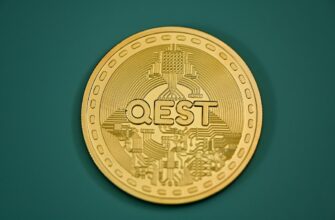USDC vs USDT vs DAI: A Comprehensive Comparison of Stablecoins
In the world of cryptocurrency, stablecoins have emerged as a popular choice for investors seeking to hedge against market volatility. Among the most prominent stablecoins are USDC, USDT, and DAI. Each of these stablecoins has its unique features, advantages, and disadvantages. In this article, we will compare USDC vs USDT vs DAI to help you understand the differences and make an informed decision.
What are Stablecoins?
Stablecoins are a type of cryptocurrency that is designed to maintain a stable value, typically pegged to a fiat currency like the US Dollar. They are used for various purposes, including trading, hedging, and as a store of value. Stablecoins achieve their stability through different mechanisms, such as collateralization, algorithmic control, or a combination of both.
USDC vs USDT vs DAI: An Overview
Let’s start with a brief overview of each stablecoin:
- USDC (USD Coin): Issued by Circle, USDC is a fully collateralized stablecoin backed by US Dollars held in reserve. It is built on the Ethereum blockchain and is ERC-20 compliant.
- USDT (Tether): Issued by Tether Limited, USDT is one of the oldest and most widely used stablecoins. It is also pegged to the US Dollar and is available on multiple blockchains, including Ethereum, Tron, and Omni.
- DAI: Created by MakerDAO, DAI is a decentralized stablecoin that is collateralized by a mix of cryptocurrencies. It is built on the Ethereum blockchain and is governed by a decentralized community.
USDC vs USDT vs DAI: Key Differences
Here are the key differences between USDC, USDT, and DAI:
- Collateralization:
- USDC: Fully collateralized by US Dollars held in reserve.
- USDT: Partially collateralized by US Dollars and other assets.
- DAI: Collateralized by a mix of cryptocurrencies, primarily Ethereum.
- Transparency:
- USDC: Regularly publishes audits of its reserves.
- USDT: Has faced criticism for lack of transparency in its reserves.
- DAI: Fully transparent, with all collateral and debt publicly visible on the Ethereum blockchain.
- Governance:
- USDC: Governed by Circle, a centralized entity.
- USDT: Governed by Tether Limited, a centralized entity.
- DAI: Governed by a decentralized community through the MakerDAO platform.
- Use Cases:
- USDC: Widely used for trading, payments, and as a store of value.
- USDT: Widely used for trading, especially on exchanges that do not support fiat currencies.
- DAI: Used for lending, borrowing, and as a decentralized alternative to centralized stablecoins.
USDC vs USDT vs DAI: Pros and Cons
Here are the pros and cons of each stablecoin:
- USDC:
- Pros: Fully collateralized, transparent, widely accepted.
- Cons: Centralized, subject to regulatory risks.
- USDT:
- Pros: Widely used, available on multiple blockchains.
- Cons: Lack of transparency, centralized, subject to regulatory risks.
- DAI:
- Pros: Decentralized, transparent, used for lending and borrowing.
- Cons: Collateralized by cryptocurrencies, subject to market volatility.
USDC vs USDT vs DAI: FAQs
Here are some frequently asked questions about USDC, USDT, and DAI:
- Q: Which stablecoin is the best?
A: The best stablecoin depends on your specific needs and preferences. USDC is a good choice for those seeking a fully collateralized and transparent stablecoin. USDT is widely used and available on multiple blockchains. DAI is a decentralized alternative that is used for lending and borrowing.
- Q: Are stablecoins safe?
A: Stablecoins are generally considered safe, but they are not without risks. Centralized stablecoins are subject to regulatory risks, while decentralized stablecoins are subject to market volatility.
- Q: Can stablecoins be used for trading?
A: Yes, stablecoins are widely used for trading on cryptocurrency exchanges. They provide a stable medium of exchange that is not subject to the volatility of other cryptocurrencies.
In conclusion, USDC, USDT, and DAI are three of the most popular stablecoins in the cryptocurrency market. Each has its unique features, advantages, and disadvantages. By understanding the differences between USDC vs USDT vs DAI, you can make an informed decision about which stablecoin is right for you.








